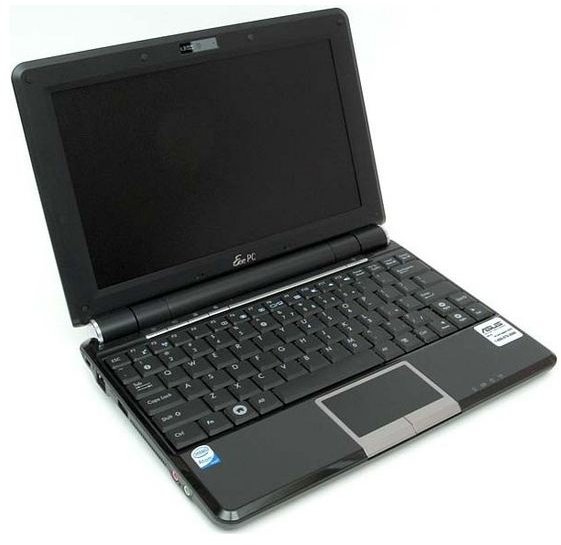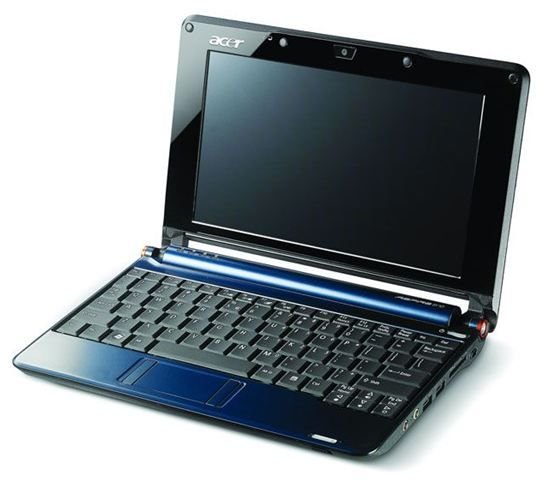Top 3 Netbooks - Three Best Netbooks Money can Buy
The Netbook Explosion
Two years ago, no one knew what a Netbook was. Not because it was an underground type of hardware, but because the concept itself didn’t really exist. Then, without warning, some companies that were not traditionally looked at as major players in the notebook field (like ASUS and Acer) started hitting the market with attractive, cheap, small laptops. It ws a revolution. The appeal of a go-anywhere PC with gobs of battery life became obvious overnight.
Now, the market has become flooded with Netbooks. Some are from familiar names like HP, while others come from smaller companies like MSI, which usually only dabble in components such as motherboards. Making sense of all the Netbooks, with their myriad titles and model numbers, can be difficult, but there are some clear winners.
Acer Aspire One
About a month ago, I gave the Aspire One honors as one of the best looking laptops available. Indeed, it isn’t difficult to look at. Although the too-bright glare of cheapish materials remains an issue, the Aspire One’s two-tone screen and body is easy to live with, and the several different available colors remains a cheesy, but enjoyable option. There is also a generally solid look to the unit which is difficult to define, but obvious when seen in person. Given the low prices in this segment, high build quality is a rare treat.
With a weight of just over 2 pounds and a screen of 8.9 inches, the Acer Aspire One’s dimensions are firmly in Netbook territory. In fact, everything about the Aspire One is firmly in Netbook territory, from its keyboard to its low-energy Atom-based heart. Being firmly set in this territory, the Aspire One is not much of a performer. 512mb of stock RAM and 8 GB of hard drive space guarantee that no one will be using this as a primary computer. But despite that, it has plenty of juice for surfing the Internet, swapping emails, and writing a few pages of text. The only serious problem is that the Aspire One’s battery life, at about 2 and a half hours, isn’t remarkable. However, battery upgrades are available which allow the Aspire One to last twice as long on a charge.
The best part, however, is the price, which is low even by Netbook standards. The basic model of the Aspire One can be had for an astonishing $299.99. Think about it - for a price lower than a decked-out iPod Touch or a Playstation 3 console, you can have a small, fully-functioning computer. It blurs the boundary between accessories and personal computers, and that makes it an excellent little Netbook.
HP 1000

HP was kind of late to the Netbook scene, but that didn’t mean they were out of touch. In fact, the HP 1000 is a noteworthy contender, offering a unique feature that is difficult to find on any other Netbook currently made. This feature has nothing to do with the performance, as the specs are largely familiar. The HP 1000 has a 1.6 Ghz Atom processor with one gigabyte of RAM. The hard drive is large, offering a beefy 60GB of hard drive space, although it is a mechanical drive rather than a SSD. And as you might expect, the HP 1000’s performance is similar to the Eee PC 1000 40G (and nearly every other 10 inch Netbook), with the 60GB model costing about $450.
But go to a retailer, open it up, and you’ll see exactly why the HP 1000 is unique: the keyboard. By making the overall size of the Netbook a little wider than most competitors, HP has managed to fit a nearly full-sized notebook keyboard onto this tiny PC. This, more than any other piece of hardware, is what determines if a Netbook can be used for long trips as a serious substitute to a more expensive business-oriented Notebook. The extra keyboard space is paid for with a smaller than normal trackpad, but simply turning up the sensitivity makes this trackpad feel as large as a normal-sized one. For anyone who does a great deal of typing, the HP 1000 is the Netbook of choice.
Asus Eee PC 1000 40G

The Eee PC is what started the entire Netbook trend. Asus hasn’t chosen to lay back as the market unfolds, and instead has taken an active role. Obviously, they know the monster they’ve created. As part of their attempts to capitalize on the success on the Eee PC name, Asus has debuted numerous Netbooks, including the Eee PC 1000 series, an Eee PC with a 10 inch screen.
Which means, of course, it is larger than the original. But Netbooks aren’t just about small size anymore, and while the Eee PC 1000 40G is not as tiny as it the first models, it is still very small. The extra size is put to good use, allowing this Eee PC to fit a larger 10 inch screen with a resolution of 1024 x 600, which is useful when web-surfing, and a larger keyboard, which is better for marathon typing sessions. The Eee PC 1000 40G also has a 40 GB solid-state drive, a full gigabyte of RAM, and an Atom processor running at 1.6 Ghz. Like most Netbooks, the Eee PC 1000 40G won’t be winning any floating-point drag races, but these improvements make the Eee PC 1000 40G less of an accessory and more of a fully-functional system.
And it gets better. To top off its larger screen, keyboard, and hard drive, the Eee PC 1000 40G has a 6-cell battery which can provide a whopping 6 to 8 hours of battery life. Asus calls this “One Day Computing,” but calling it incredible would work just as well. Don’t worry - at only $399.99, the 1000 40G remains at a Netbook price.
